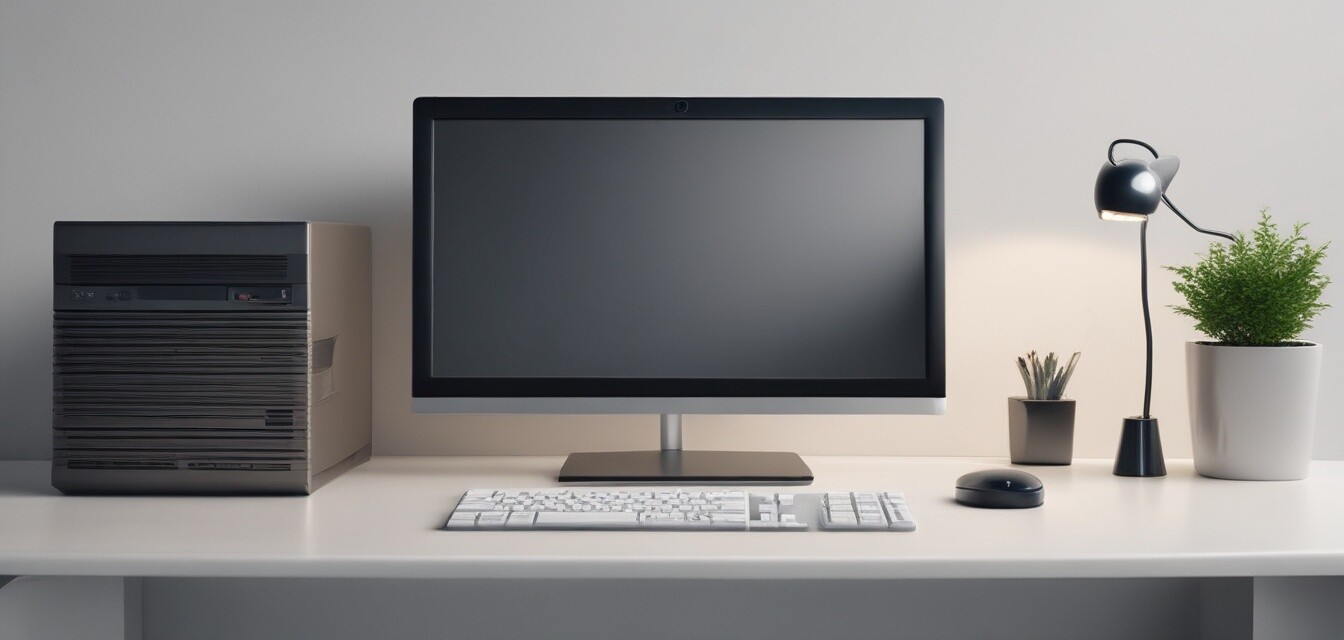
Comparing all-in-one PCs vs. traditional desktops
Key Takeaways
- All-in-one PCs offer a compact design, integrating the monitor and components into one unit.
- Traditional desktops provide more upgrade options and customization.
- Consider your workspace and intended use when choosing between the two types.
- Pricing can vary significantly based on specifications.
- Both options have their advantages and are suited to different types of users.
Choosing between an all-in-one PC and a traditional desktop can significantly impact your computing experience. With advancements in technology, it's essential to understand what each option entails in terms of performance, space, and usability. This article will break down the benefits and limitations of both all-in-one PCs and traditional desktops, helping you make an informed decision tailored to your needs.
What is an all-in-one PC?
An all-in-one PC combines a computer's components into a single unit, integrating the monitor, CPU, and often, speakers into one cohesive design. This consolidation reduces clutter, making it a popular choice for users with limited desk space.
What is a traditional desktop?
A traditional desktop consists of separate components: a monitor, CPU, keyboard, and mouse. This setup allows for greater customization and upgrade potential, catering to users needing powerful performance or specific configurations.
Comparative analysis of all-in-one PCs and traditional desktops
| Feature | All-in-one PCs | Traditional Desktops |
|---|---|---|
| Design | Compact and sleek | More bulky and separated |
| Space Requirement | Minimal desk space needed | Requires more space due to separate components |
| Upgrade Options | Limited upgrade opportunities | Highly customizable and upgradeable |
| Performance | Suitable for everyday tasks and light gaming | Can be configured for high-performance gaming or heavy workloads |
| Price Range | Generally higher for lower-spec models | Wide range depending on components chosen |
| Portability | Easy to move | Less portable due to multiple components |
Advantages of all-in-one PCs
- Space-saving: Ideal for smaller workspaces, minimizing clutter.
- Easy setup: Typically, plug-and-play with fewer cables to manage.
- Aesthetics: Modern designs add a sleek look to your work area.
- Integrated components: Often include built-in speakers and cameras, which reduce additional purchases.
Disadvantages of all-in-one PCs
- Limited upgradeability: Usually challenging or impossible to upgrade components like the graphics card.
- Higher cost for equivalent performance: You may pay more for similar specs compared to a desktop.
- Performance constraints: May struggle under heavy workloads or high-end gaming.
Advantages of traditional desktops
- Customizable: Ability to choose components suited to your needs and upgrade them over time.
- Better performance: Generally offers superior performance for gaming and high-demand applications.
- Cost-effective: More flexibility regarding pricing; you can create a system that fits your budget.
Disadvantages of traditional desktops
- Space requirement: They require more room and create more clutter due to separate components.
- Complex setup: Multiple parts mean a more complicated setup process.
- Less aesthetic appeal: Often not as visually appealing as all-in-one models.
Who should choose an all-in-one PC?
If you are looking for a compact, easy-to-set-up computer primarily for browsing, streaming, or basic office work, an all-in-one PC could be the ideal choice. Their design is especially favorable for users with limited desk space, such as students or those in home offices.
Who should consider a traditional desktop?
For gamers, professionals, or anyone requiring high-performance machines for graphics-intensive tasks, traditional desktops are the better option. Their ease of upgrading and customizable aspects make them suitable for those seeking longevity and power in their systems.
Tips for making the right choice
- Identify your primary usage - is it for gaming, work, or casual browsing?
- Consider your workspace - do you have enough room for a traditional setup?
- Think about your budget and future needs - will you want to upgrade later?
- Read more about general buying guides to ensure you select the right device.
Conclusion
Ultimately, the choice between an all-in-one PC and a traditional desktop depends on your specific needs and circumstances. Both options come with distinct advantages and drawbacks, and understanding those can help you make a more informed decision. Explore further into our 2-in-1 convertibles and budget laptops to find additional alternatives that might fit your requirements.